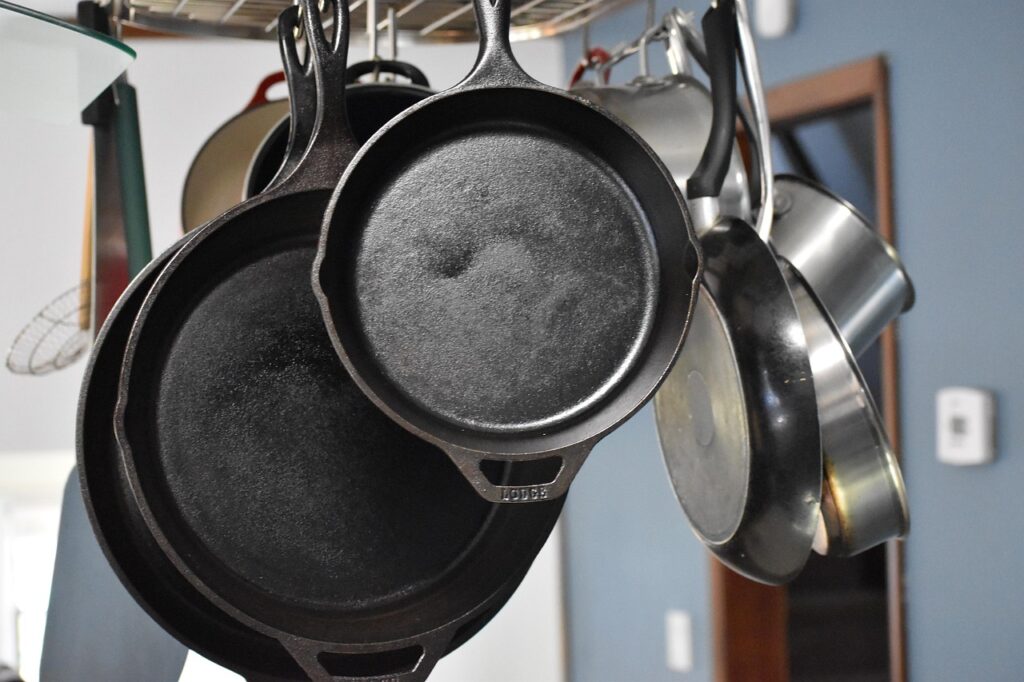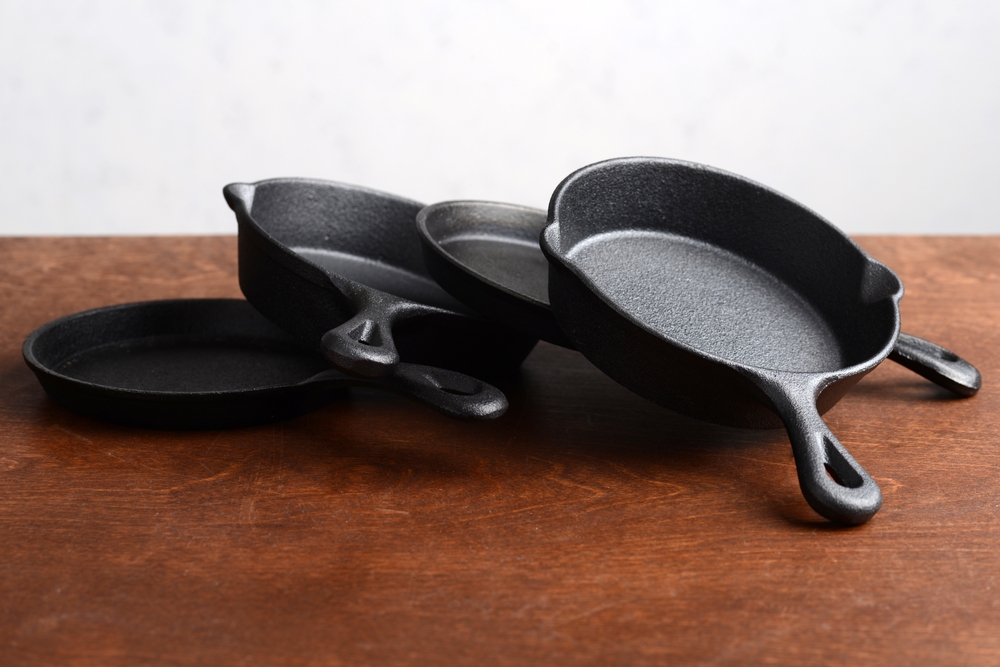Cast iron cookware has experienced a remarkable resurgence in recent years, with home cooks rediscovering the benefits of these durable, versatile pans. However, along with this renewed interest comes a surprising amount of misinformation that can intimidate newcomers and frustrate experienced users alike.

These misconceptions often stem from outdated practices, marketing myths, or well-meaning but misguided advice passed down through generations. The truth is that these pans are far more forgiving and practical than many people believe. By dispelling these common myths, you can unlock the full potential of your cookware and enjoy decades of reliable cooking performance.
Myth 1: You Can Never Use Soap
This persistent myth ranks as perhaps the most widespread misconception about cast iron care. The belief stems from an era when dish soaps contained lye, a caustic substance that could indeed strip away seasoning layers. Modern dish soaps, however, are formulated differently and pose no threat to properly seasoned cast iron.
The seasoning on your pan consists of polymerized oil that has bonded to the metal through heat treatment. This creates a durable, plastic-like coating that cannot be removed by gentle dish soap and warm water. In fact, using soap helps remove food residue and bacteria that could compromise both the pan’s performance and food safety.
The key lies in moderation and technique. Use a small amount of mild dish soap with warm water and a soft sponge or brush. Avoid harsh detergents, steel wool, or extended soaking, which can create problems regardless of soap use. After washing, dry the pan immediately and apply a thin layer of oil while the metal is still warm to maintain the seasoning.
Myth 2: Cast Iron Provides Natural Non-Stick Properties
While well-seasoned pan can develop impressive release properties, calling it “naturally non-stick” sets unrealistic expectations. Cast iron requires proper seasoning maintenance and appropriate cooking techniques to achieve good food release. Even then, it will never match the effortless performance of modern non-stick coatings.
The seasoning layer on cast iron creates a smooth surface that can release food well when properly maintained and heated. However, this performance depends on several factors. Including the quality of seasoning, cooking temperature, fat content in the food, and the specific ingredients being cooked. Delicate proteins like fish and eggs often require additional fat and careful temperature control to prevent sticking.
New pans typically require several cooking sessions and seasoning applications before developing reliable release properties. Understanding this reality helps set appropriate expectations and prevents frustration during the initial break-in period. Focus on building seasoning layers gradually through regular cooking rather than expecting immediate non-stick performance.
Myth 3: You Must Use Only Specific Oils for Seasoning
The internet overflows with heated debates about the “best” seasoning oil. With advocates claiming that only flaxseed oil, grapeseed oil, or other specific options will create proper seasoning. This myth creates unnecessary anxiety and expense around what should be a straightforward process.
Any cooking oil with a reasonable smoke point can create effective seasoning when applied correctly. The polymerization process that creates seasoning depends more on proper application technique and heat treatment than on the specific oil used. Common oils like vegetable oil, canola oil, and even shortening can produce excellent, durable seasoning layers.
The most important factors in successful seasoning include applying thin, even coats of oil, heating the pan to the appropriate temperature, and allowing sufficient time for polymerization to occur. Multiple thin layers generally outperform single thick applications, regardless of the oil chosen. Focus on consistency and technique rather than searching for the perfect oil.
Myth 4: Cast Iron Requires Extensive Maintenance and Rusts Easily
This intimidating myth prevents many people from enjoying their cookware, creating images of complex maintenance routines and pans that rust at the first sign of moisture. While cast iron does require some care, the actual maintenance needs are far less demanding than commonly believed.

Properly seasoned pans develops a protective barrier that resists rust formation under normal use conditions. Regular cooking actually helps maintain this protective layer, as the heat and oil from cooking continue the seasoning process. Rust typically only becomes a problem when pans are stored wet, subjected to excessive moisture, or have damaged seasoning that exposes bare metal.
Daily maintenance involves little more than cleaning the pan after use, drying it thoroughly, and applying a light coat of oil while warm. This routine takes just a few minutes and becomes second nature with practice. Even if rust does appear, it can usually be removed with gentle abrasion and the pan re-seasoned without permanent damage.
Myth 5: Acidic Foods Will Destroy Cast Iron Seasoning
The fear of cooking acidic foods in cast iron has led many home cooks to avoid tomatoes, vinegar-based sauces, and citrus preparations in their pans. While acidic foods can interact with cast iron under certain conditions, this myth greatly exaggerates both the risk and the consequences.
Well-seasoned pots can handle moderate amounts of acidic ingredients without significant seasoning damage. The polymerized oil layer provides protection against acid interaction with the underlying metal. Problems typically arise only when cooking highly acidic foods for extended periods in poorly seasoned pans or when the acid concentration is extremely high.
The key lies in understanding your pan’s seasoning quality and adjusting cooking methods accordingly. Newer pans or those with thin seasoning should limit acidic food exposure until better seasoning develops. Established pans with multiple seasoning layers can handle tomato sauces, wine reductions, and other acidic preparations without concern. Brief contact with acidic ingredients poses minimal risk to any properly maintained pan.
Myth 6: It Heats More Evenly Than Other Cookware
This myth likely persists because cast iron does possess excellent heat retention properties. Leading people to assume it also distributes heat evenly. However, cast iron actually heats quite unevenly, creating hot spots that correspond to burner placement and flame patterns.
The thermal conductivity of cast iron is significantly lower than materials like aluminum or copper, meaning heat moves slowly through the metal. This results in temperature variations across the pan surface, particularly noticeable on gas burners where flame contact creates distinct heating patterns. Electric burners can produce somewhat more even heating, but variations still occur.
The real strength of cast iron lies in its heat retention and thermal mass. Once heated properly, it maintains steady temperatures and delivers consistent cooking results. Preheating the pan thoroughly and allowing time for heat distribution helps minimize hot spots. Understanding this characteristic allows you to work with your cast iron’s properties rather than against them, positioning food appropriately and adjusting techniques for optimal results.
Cast iron cookware offers genuine benefits, including durability, versatility, and excellent heat retention when you understand its true characteristics. By abandoning these common myths, you can approach cooking with realistic expectations and proper techniques that will serve you well for years to come.
Disclaimer: This article was created with AI assistance and edited by a human for accuracy and clarity.

